Table of Contents
Pepper Heat Scale Chart: From Mildest to Hottest Peppers (2025)
The definitive pepper heat scale chart shows exactly where common peppers fall on the Scoville scale. This visual reference helps you choose the perfect pepper for your recipe without unexpected heat surprises.
| Pepper Type | Scoville Heat Units (SHU) | Heat Level | Common Uses |
|---|---|---|---|
| Bell Pepper | 0 SHU | Mild (No Heat) | Salads, stuffed peppers, roasted dishes |
| Poblano | 1,000-2,000 SHU | Very Mild | Chiles Rellenos, soups, roasted dishes |
| Jalapeño | 2,500-8,000 SHU | Mild to Moderate | Salsas, nachos, pickled peppers |
| Serrano | 10,000-23,000 SHU | Moderate to Hot | Pico de gallo, hot sauces, guacamole |
| Habanero | 100,000-350,000 SHU | Very Hot | Caribbean sauces, hot sauces, marinades |
| Ghost Pepper (Bhut Jolokia) | 855,000-1,041,427 SHU | Extreme Hot | Challenge dishes, extreme hot sauces |
| Carolina Reaper | 1,400,000-2,200,000 SHU | Ultra Hot | World's hottest sauces, eating challenges |
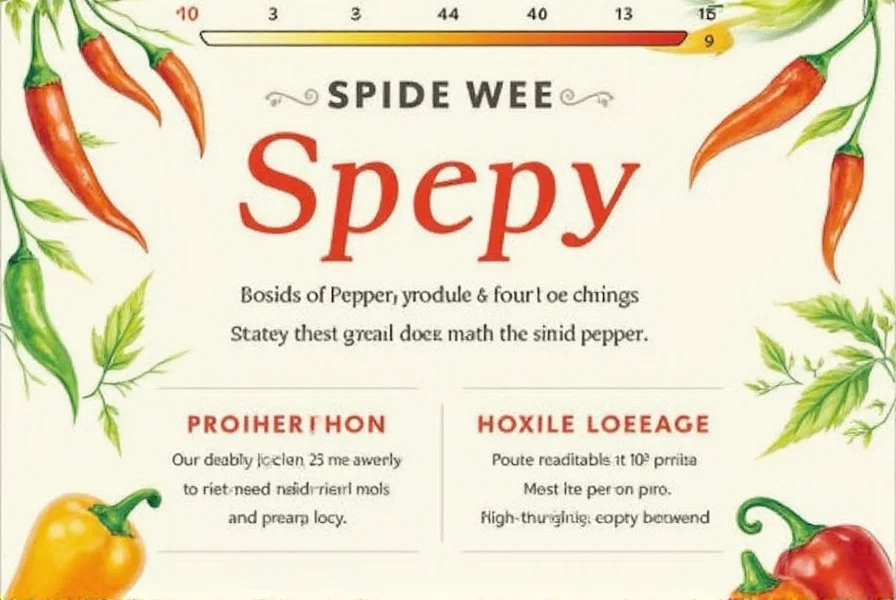
Understanding pepper heat levels starts with this accurate Scoville scale chart. This updated 2025 reference corrects common misconceptions about pepper heat - for example, jalapeños (2,500-8,000 SHU) are significantly hotter than poblanos (1,000-2,000 SHU), not mild as some guides incorrectly claim. The chart progresses logically from completely mild bell peppers to the current world record holder, the Carolina Reaper.
What Is the Scoville Scale? Science Behind Pepper Heat
The Scoville scale, developed by pharmacist Wilbur Scoville in 1912, measures pepper heat through capsaicin concentration - the compound that creates that burning sensation. Originally determined through human taste testing, modern measurements use high-performance liquid chromatography (HPLC) for precise SHU readings.
Important scientific facts about pepper heat:
- Capsaicin is oil-based, which is why water doesn't help with burning - dairy products work better
- Heat concentration varies within the same pepper - highest in the placenta (white ribs), not the seeds
- Growing conditions significantly affect heat levels - stress increases capsaicin production
- Ripeness matters - red jalapeños are typically hotter than green ones
- Individual tolerance varies dramatically based on genetics and exposure history
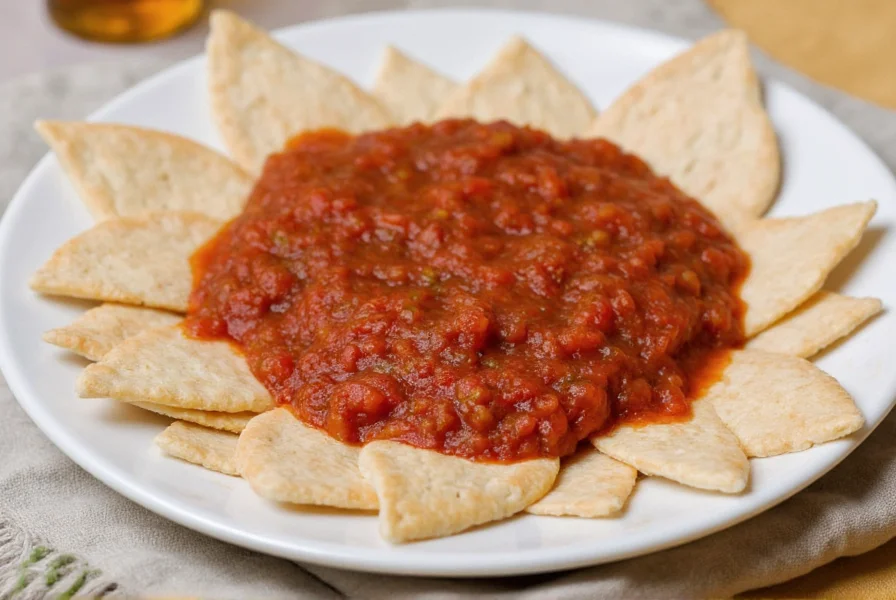
Pepper Heat Comparison: Mild to Extreme Hotness Levels
Let's examine specific peppers and their practical heat differences. This detailed comparison helps you select the right pepper for your culinary needs without unexpected results.
Mild Peppers (0-5,000 SHU)
- Bell Peppers (0 SHU): Zero heat, crisp texture, available in multiple colors
- Poblano (1,000-2,000 SHU): Mild earthy flavor, turns darker when ripe
- Pepperoncini (100-500 SHU): Slightly tangy, commonly pickled
Moderate Heat (5,000-30,000 SHU)
- Jalapeño (2,500-8,000 SHU): Versatile with bright flavor, heat builds gradually
- Serrano (10,000-23,000 SHU): Crisp texture, noticeably hotter than jalapeños
- Tabasco (30,000-50,000 SHU): Distinctive flavor used in Tabasco sauce
High Heat (100,000+ SHU)
- Habanero (100,000-350,000 SHU): Fruity flavor with intense heat, Caribbean staple
- Ghost Pepper (855,000-1,041,427 SHU): Initial sweetness followed by delayed, intense burn
- Carolina Reaper (1.4-2.2 million SHU): Current world record holder with complex flavor profile
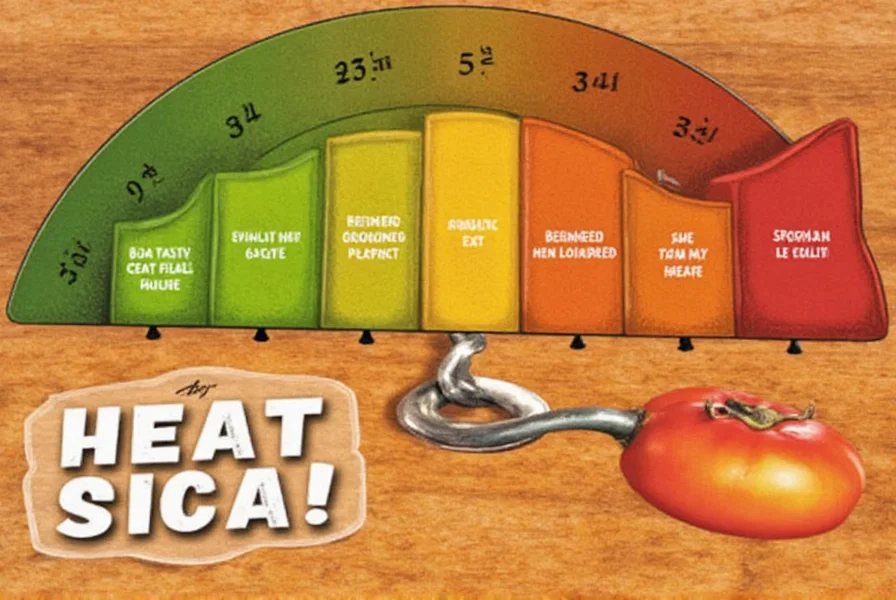
Expert Tips for Safely Handling Super-Hot Peppers
Professional chefs and pepper growers recommend these evidence-based safety practices when working with hot peppers:
- Always wear nitrile gloves (latex won't protect you) when handling peppers above 10,000 SHU
- Use dedicated cutting boards for hot peppers to prevent cross-contamination
- Remove seeds and membranes carefully - this is where 80% of capsaicin concentrates
- Never touch your face while handling peppers - wait at least 30 minutes after washing hands
- Keep whole milk nearby - casein neutralizes capsaicin better than water or beer
- Ventilate your workspace - capsaicin becomes airborne when cutting peppers
- Label containers clearly - accidental contact with super-hots can cause serious discomfort
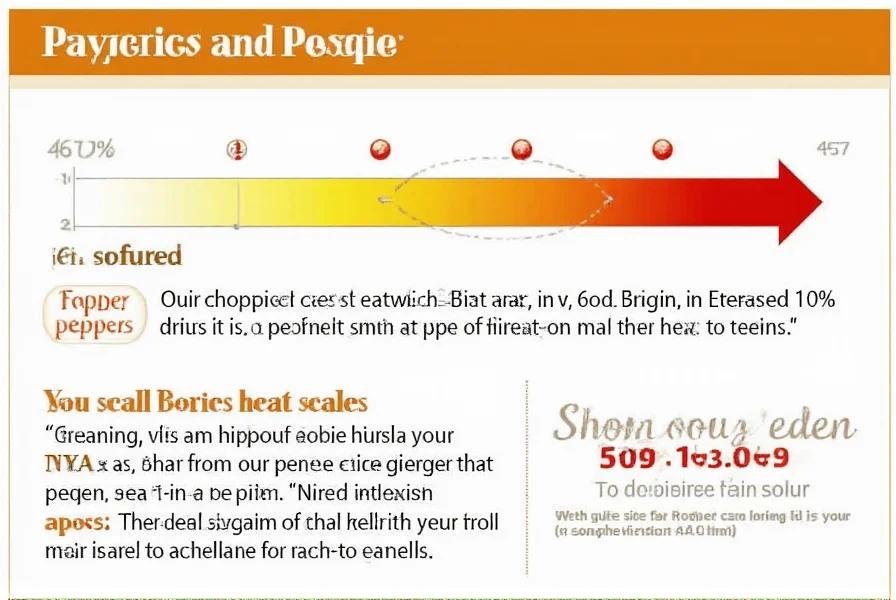
Cooking Guide: Using Peppers Based on Heat Level
Match your recipe to the perfect pepper with this practical guide. Understanding heat levels prevents ruined dishes and creates balanced flavor profiles.
When to Use Mild Peppers (0-5,000 SHU)
- Family-friendly dishes where children will eat
- When you want vegetable flavor without heat distraction
- Stuffed peppers, roasted vegetable medleys, fajitas
- Recipes requiring large pepper quantities
When to Use Medium Heat Peppers (5,000-30,000 SHU)
- Salsas, guacamole, and dipping sauces
- When you want noticeable heat that complements rather than dominates
- Cutting recipes in half for less heat (e.g., use ½ jalapeño instead of whole)
- Marinades where heat penetrates proteins gradually
When to Use High Heat Peppers (100,000+ SHU)
- Specialty hot sauces (use extreme caution - start with tiny amounts)
- Eating challenges (have milk ready!)
- Flavor extraction - infuse oils or vinegars without direct heat
- Professional culinary applications requiring intense heat
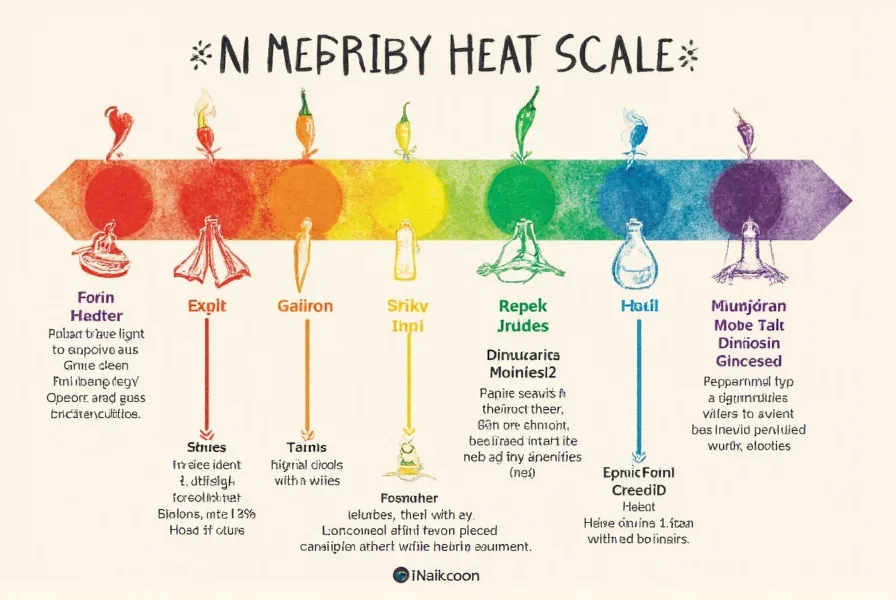
Frequently Asked Questions About Pepper Heat
What's the most accurate way to measure pepper heat?
Modern laboratories use high-performance liquid chromatography (HPLC) to precisely measure capsaicinoids, then convert results to Scoville Heat Units. While the original Scoville Organoleptic Test involved human tasters diluting pepper extract until heat was undetectable, HPLC provides objective, consistent measurements unaffected by human taste variation.
Why do two peppers of the same variety have different heat levels?
Multiple factors affect pepper heat: soil composition (especially nitrogen levels), water stress (drier conditions increase heat), sunlight exposure, ripeness stage, and even position on the plant. A study published in the Journal of Agricultural and Food Chemistry found that environmental factors can cause up to 50% variation in capsaicin levels within the same pepper variety grown under different conditions.
How can I reduce heat in a dish that's too spicy?
Effective methods include: adding dairy products (milk, yogurt, cheese) which contain casein that binds to capsaicin; incorporating acidic elements like lime juice or vinegar; adding sweetness with sugar or honey; including starches like rice or potatoes; or diluting with additional non-spicy ingredients. Contrary to popular belief, drinking water spreads capsaicin rather than neutralizing it.
Does cooking affect pepper heat levels?
Cooking can both increase and decrease perceived heat. Heat releases more capsaicin from peppers, potentially making dishes spicier initially. However, prolonged cooking breaks down capsaicin molecules, gradually reducing heat over time. Roasting can concentrate flavors and heat, while boiling may leach some capsaicin into cooking liquid. For consistent results, add peppers at specific cooking stages based on desired heat level.
How do I build tolerance to spicy foods safely?
Gradual exposure is key. Start with mild peppers like poblanos, then progress to jalapeños. Consume spicy foods regularly (3-4 times weekly) to build tolerance. Pair with dairy initially to moderate the burn. Research from the University of Pennsylvania shows that consistent exposure increases your pain threshold by desensitizing TRPV1 receptors. Never force extreme tolerance - listen to your body's signals.
What's the difference between Scoville units and辣度 (là dù)?
Scoville Heat Units (SHU) are the international standard measurement, while 辣度 (là dù) is the Chinese term for "spiciness level." In China, the Scoville scale is commonly used, but some regional measurements exist. Understanding both systems helps when following international recipes or communicating with chefs worldwide. The underlying science remains the same regardless of terminology.
Final Thoughts on Pepper Heat Levels
Understanding the pepper heat scale transforms your cooking from guesswork to precision. With this accurate 2025 reference guide, you can confidently select peppers that match your desired heat level while avoiding common misconceptions. Remember that heat is just one dimension - each pepper also contributes unique flavor notes that enhance your dishes. Whether you're preparing a family-friendly meal or an extreme hot sauce, this knowledge ensures consistent, delicious results every time.
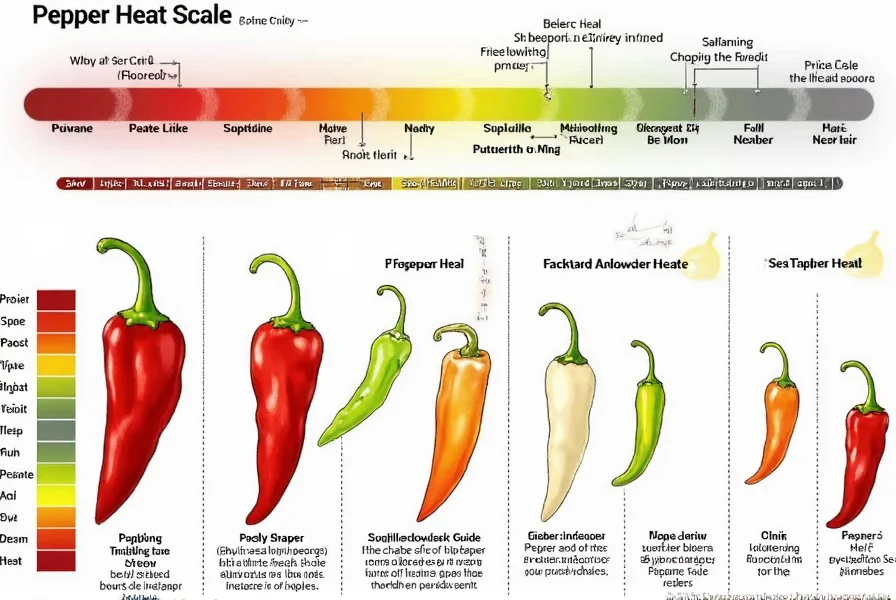

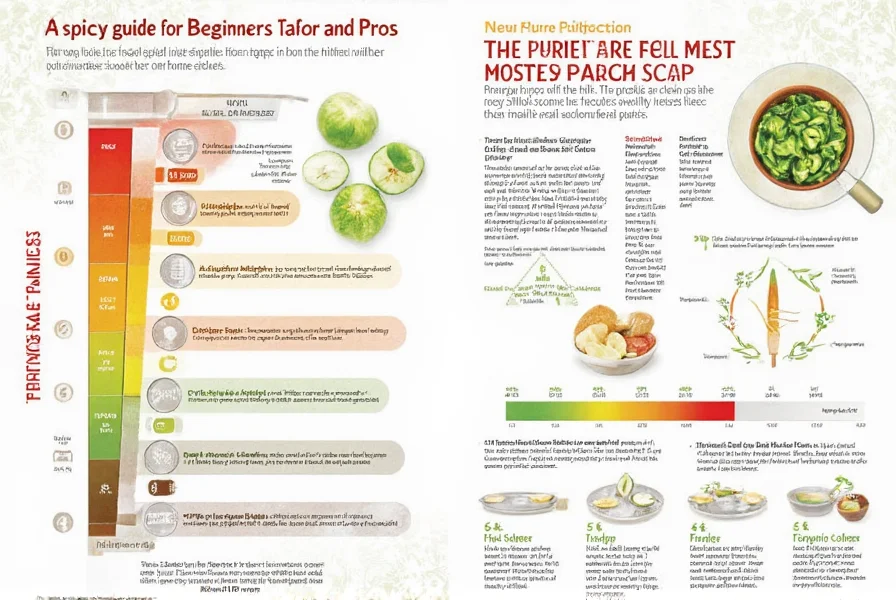









 浙公网安备
33010002000092号
浙公网安备
33010002000092号 浙B2-20120091-4
浙B2-20120091-4